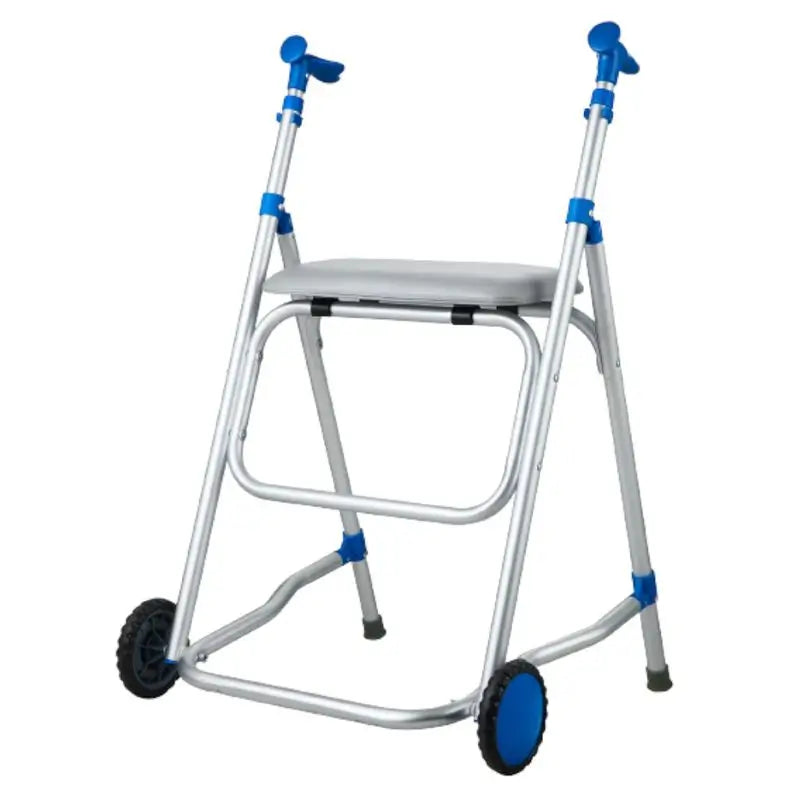Free Shipping on purchases over €100

This aluminium walker with wheels and seat offers a lot of stability when walking. Its structure is foldable. The wheels make walking easier, as the walker does not need to be lifted, and help the walker to glide.


Made of aluminium. Anatomical handles.upholstered seat Height adjustable: 86.5 to 95 cm Total width: 58 cm. Width between back heels: 44 cm. Product size: 59 x 55 cm Seat size: 40 x 20 cm Product weight: 2,800 kg. Maximum weight: 100 kg Contera Ref.: 82225 HERA-CV Code: EAN 010B-504 SIRPO Code: E0007664 The walker is a technical aid for mobility. It is a metal structure that provides the user with greater stability and support when walking and, in many cases, provides greater psychological peace of mind. Walking aids are suitable for people with weakness in one or both lower limbs, people with balance disorders or those who have a global decrease in strength but still have enough strength in their upper limbs to manage it. There is a wide variety and typology of walking aids. It is important to choose the most suitable one for each patient to ensure maximum functionality. The most basic walkers are known as step walkers. Accessories can be added, such as wheels, brakes, seats, baskets or trays, which complement the walker and give it other advantages in order to adapt it to the needs of the user. Whichever type of walker is chosen, it is important to adjust the walker to the right height for the patient. To do this, the user should be placed in a standing position with the arms resting in a relaxed position at the sides. When using the walker, the elbows should be slightly bent (approximately 20º of elbow flexion). This proper adjustment allows the person to support approximately half of his or her weight. If the arms are not bent at a comfortable angle, the patient will put too much strain on the shoulders and back.
We use our own and third party cookies for strictly functional purposes, allowing navigation on the website, as well as for analytical purposes, to show you advertising (both general and personalized) based on a profile drawn up from your browsing habits (e.g. pages visited), to optimize the website and to be able to assess the opinions of the products purchased by users.to manage or disable these cookies click on Cookies Settings. You can find more information in our cookie policy.
We use cookies and/or similar technologies that store and retrieve information when you perform a search. These cookies may be about you, your preferences or your device. They are mainly used for the proper functioning of the web pages, generally this information does not directly identify you, but can provide you with a more personalized web experience. All cookies on this website are disabled by default, except for technical cookies which, as we indicate in the corresponding section, are necessary and cannot be disabled on our systems. The user can define his preferences regarding cookies by clicking on the different headings of each category, as well as obtain more information about each category of cookies. If you do not authorize the download of certain types of cookies, please note that your browsing experience on the website may be affected and the services we can offer you through the website may also be affected.
These cookies are necessary for the website to function and cannot be disabled on our systems. They are usually set to respond to actions made by you to receive services, such as adjusting your privacy preferences, logging into the site, or filling out forms. You can set your browser to block or alert you to the presence of these cookies, but some parts of the website will not function. These cookies do not store any personally identifiable information.
| Nombre | Host | Duración | Tipo | Descripción |
|---|
These cookies are for statistical use and allow us to check your behavior on our website.
| Nombre | Host | Duración | Tipo | Descripción |
|---|
They are those that allow the management, in the most efficient way possible, of the advertising spaces that, where appropriate, the publisher has included on a web page, application or platform from which it provides the requested service based on criteria such as the edited content or the frequency with which the ads are displayed.
| Nombre | Host | Duración | Tipo | Descripción |
|---|
